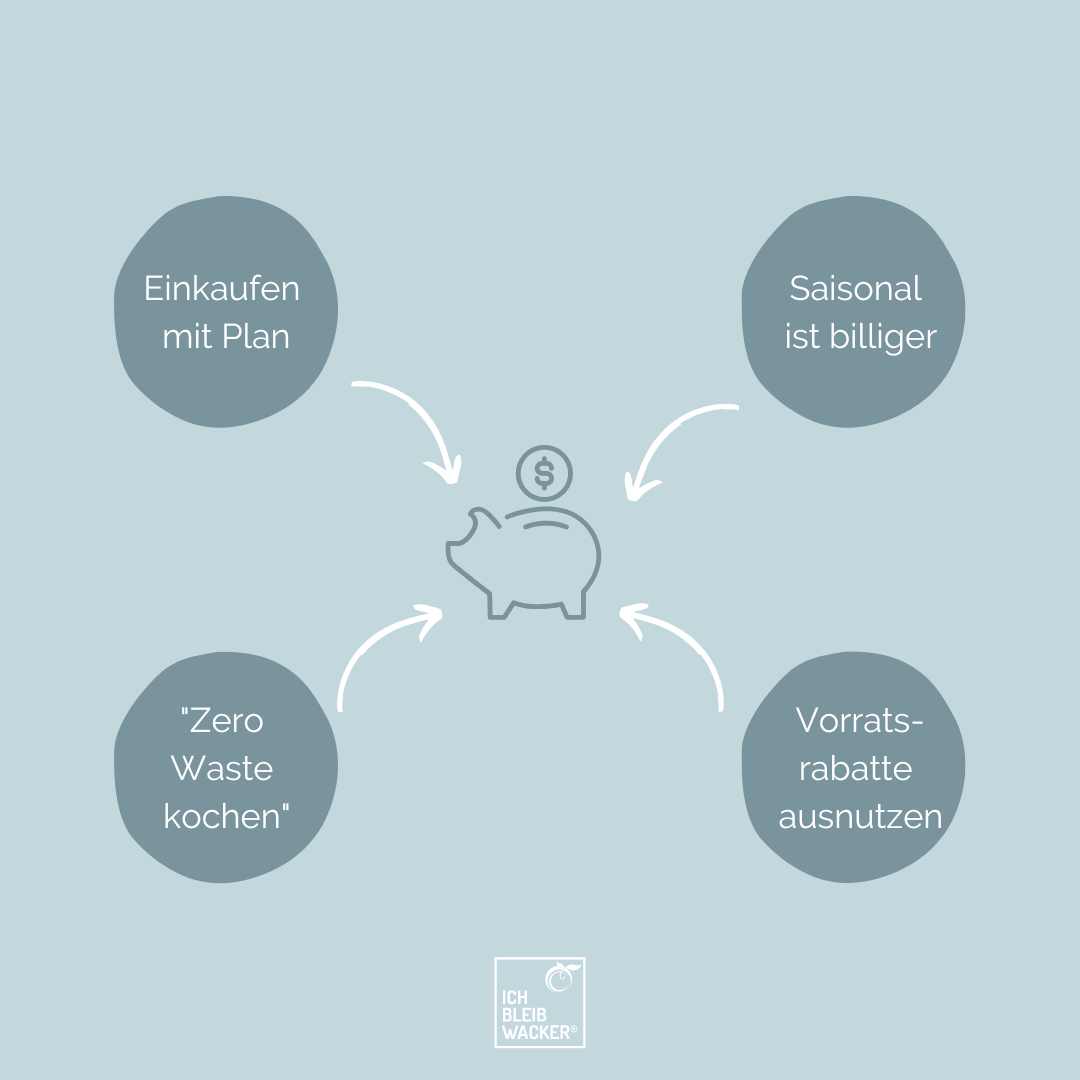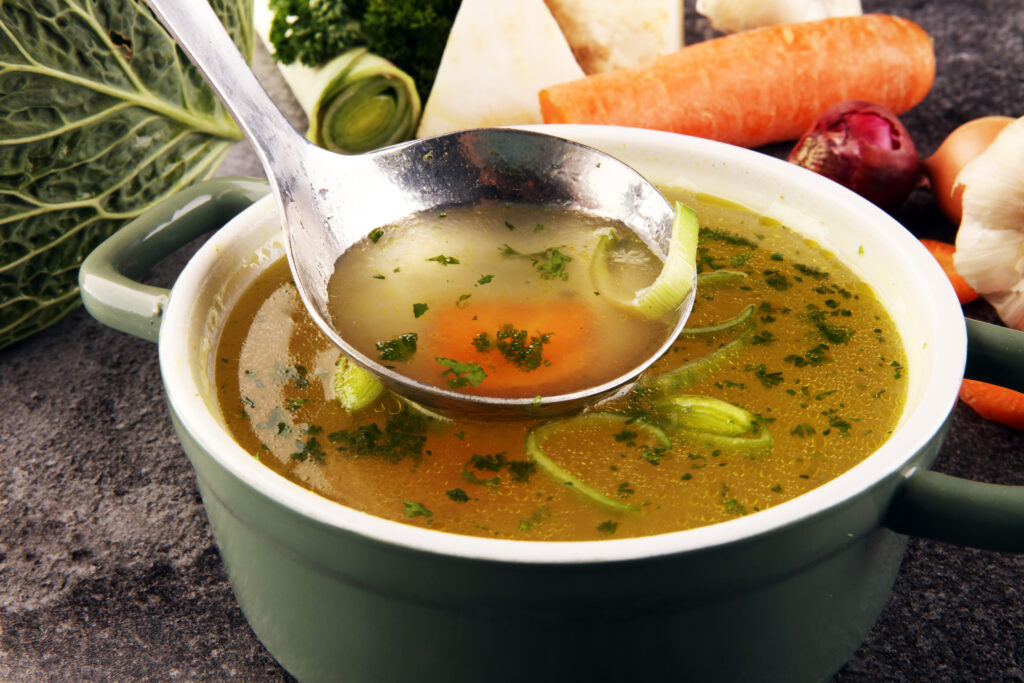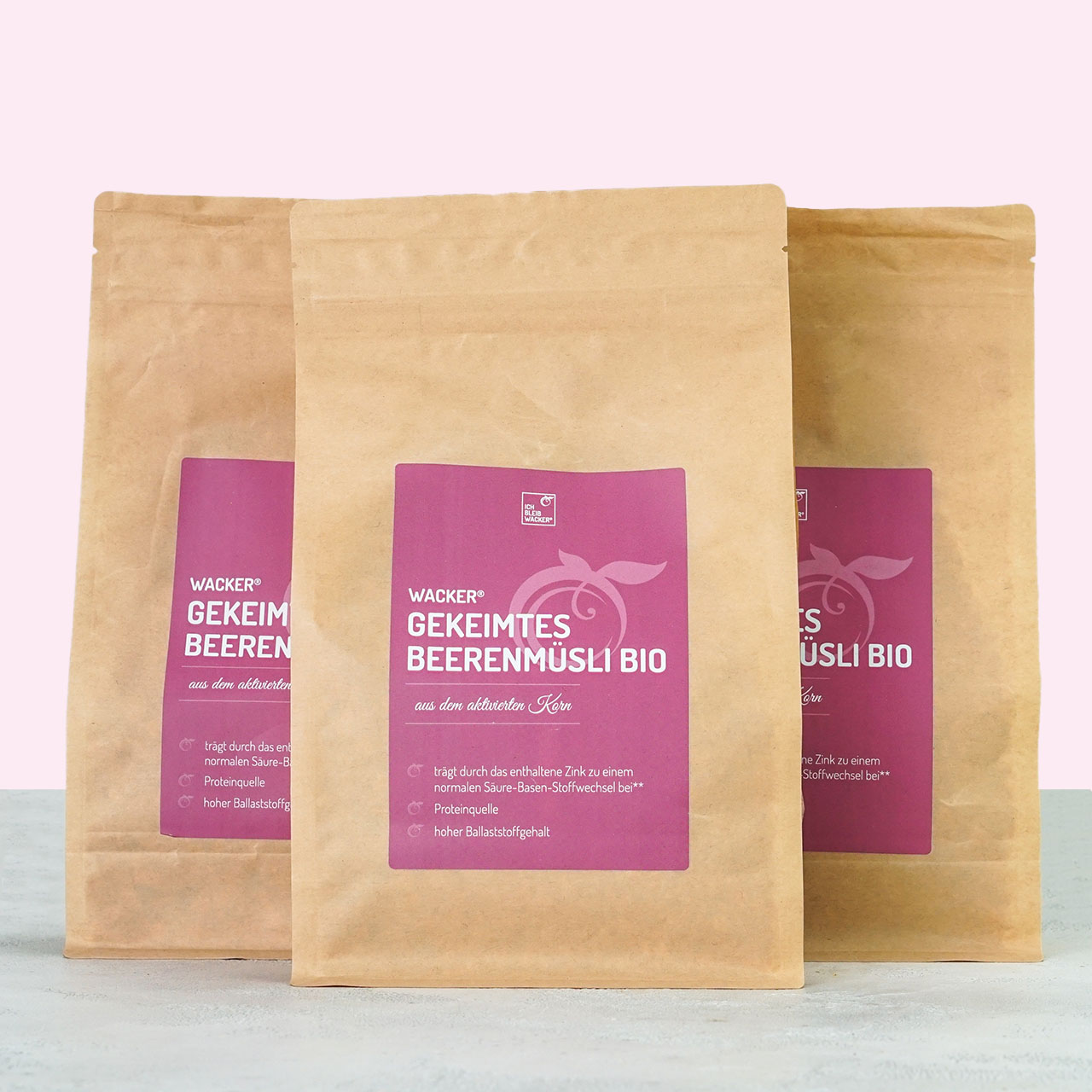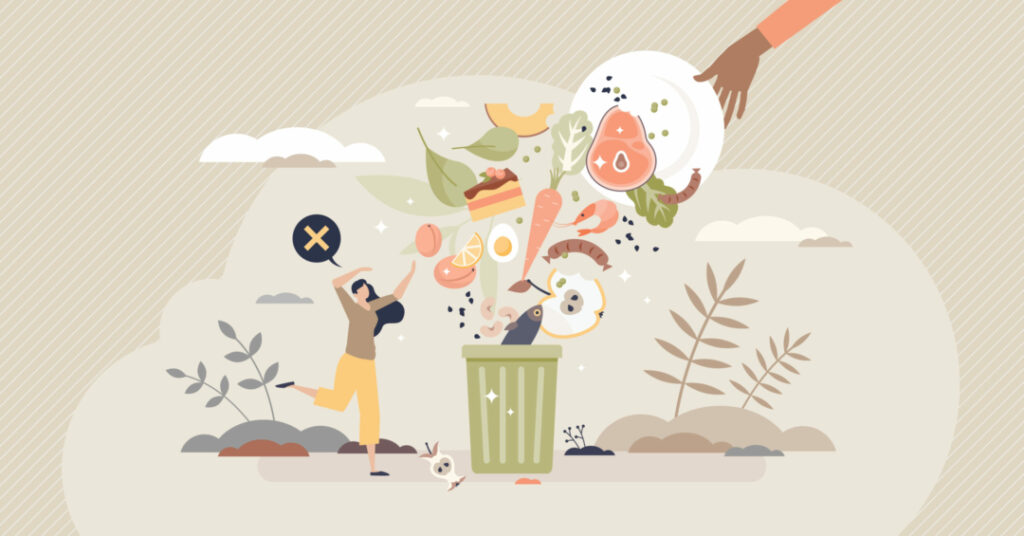No matter where you look, prices are rising. Not only do we have to dig deeper into our pockets for heating or petrol, food prices have also risen sharply. Perhaps you also feel an inner conflict: a healthy and high-quality diet is important to you, but at the same time you don't want to spend huge amounts of money on food. In this article you will learn how to balance good nutrition and saving money.

Shopping with a plan
Spontaneous shopping usually ends up with a shopping trolley far too full of "unnecessary" things and in the end we have forgotten the most important thing. Spontaneous pleasure shopping not only keeps us from our goal of eating healthy, but also ensures that we buy too much and can't even use up all the food in time. The result: they end up in the bin. This is not only a waste of resources, but also literally a waste of money.
The better way: Check your supplies. What is close to its expiry date and needs to be used up quickly? Then think about what you can cook with it. Write a shopping list with the missing products that you need and buy only what is on your list 😊 By the way: There are great apps for shopping lists or weekly planners. That way you always have everything with you and can't forget a piece of paper at home.
Seasonal is cheaper
If you buy fruit and vegetables according to their seasonal and regional availability, you can usually save a lot of money. For example, apples and pears are currently cheap everywhere, whereas an imported mango or pineapple costs much more. And here, too, you are not only doing your wallet good, but also the environment: regional food has a much lower CO2 footprint. So you kill two birds with one stone. You can find out which fruit and vegetables are currently in season at our Instagram channel @bleibwacker at the beginning of each month.
"Zero Waste Cooking
Many leftover vegetables that we normally throw away can still be used. Here are a few simple tips: When you cut vegetables, save the ends and the peel (provided you use organic produce). Collect them in a container and freeze them until you have some leftovers. You can use them to make a delicious vegetable broth, which always tastes a little different depending on the vegetable leftovers. This way it won't be boring 😊

You can make delicious vegetable crisps from many peelings, for example beetroot, parsnip, radish or savoy and kale leaves. Simply cut the peel or leaves into small pieces, mix with olive oil and spices of your choice and bake in a pan or oven until they are nice and crispy. Your quasi-free snack is ready 😊
Make pestos from vegetable greens: Carrot greens, for example, are ideal for this. But the leaves of kohlrabi, beetroot and radishes are also great for making pesto. However, with all these tips it is important that you use organic products to avoid pesticide residues.
Take advantage of stock discounts
With dry food, it is no problem to store it for a longer period of time. Often, the larger packages cost significantly less than the small ones. Many online shops also offer quantity discounts and storage packages. So if you know you're going to use certain foods a lot anyway, you can easily save by stocking up.
By the way: Despite a sharp rise in raw material prices, we have maintained our sales prices in the Wackershop not increased so far.

Image Vegetable broth: Adobe Stock, beats_, #314374855
Sources: NDR, Federal Centre for Nutrition





Hi, great article! Please more articles of this kind. Many greetings